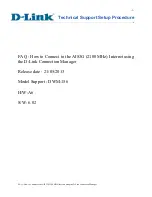
AFFORDABLE MICS FOR YOUR HOME STUDIO
By Bruce Bartlett, Crown International
No doubt about it: if you have a home studio, you need one or more good microphones. With
them you can record or sample vocals, acoustic drums, acoustic guitar, electric guitar, piano, sax,
and so on.
Over the last few years, the number of affordable mics for home and project studios has grown
enormously. While it’s great to have so many choices, it is also confusing. Out of the many
models available, what are some low-cost mics that provide good value for home recording?
This article will provide some answers. First we need to briefly review microphone specs. Then
we’ll list the main microphone types for home recording, and finally we’ll give example models of
each type.
Make sure that your dealer has a return policy so you can return the microphone if it’s not to your
taste.
SPECS: WHAT TO LOOK FOR
One important specification is
frequency response
. This is the range of frequencies that the
microphone can reproduce, within a tolerance (such as +/- 3 dB). For example, 50 Hz to 15 kHz
+/- 2 dB. Generally the wider the frequency range, and the smaller the dB range, the more
accurate and natural the mic sounds. A rise of a few dB above, say, 5 kHz is also acceptable
because it provides a crisp sound with presence. For most instruments, a response from 80 Hz to
15 kHz or 20 kHz is adequate. Instruments with deep bass (acoustic bass, kick drum and piano)
require a response down to 40 Hz or so.
Figure 1 below shows a frequency-response curve of a microphone: its relative output in dB
versus frequency. The solid curve is the frequency response for sounds arriving in front of the
microphone from 2 feet away. The dashed line is the response for sounds at the rear of the mic
(at 180 degrees).
20
100
1K
10K
+15
+10
+5
dB 0
-5
-10
-15
-20
-25
-30
-35
0° 2 FT.
180° 2 FT.
FLAT
ROLLOFF
CUTOFF
20K
Figure 1. Example of the frequency response of a microphone.
The microphone should have low
self-noise
(inaudible hiss). A self-noise spec around 20 dB A-
weighted is good, and 14 dB A-weighted or less is excellent. The microphone should be able to
handle up to 135 dB SPL (sound pressure level) with no more than 3% total harmonic distortion.
A
maximum SPL
spec of 120 dB SPL is good, 140 dB is very good, and 150 dB is excellent.
























